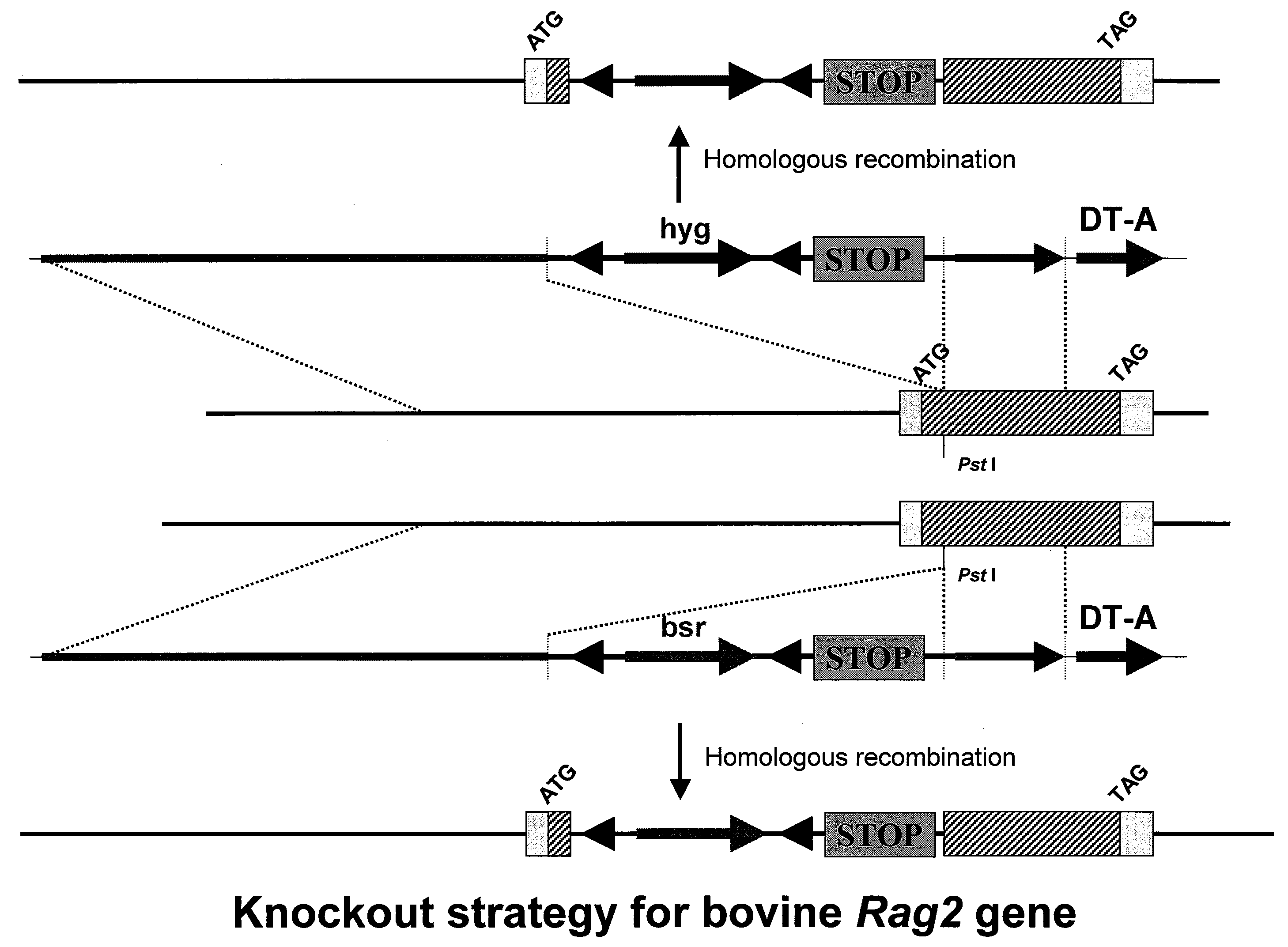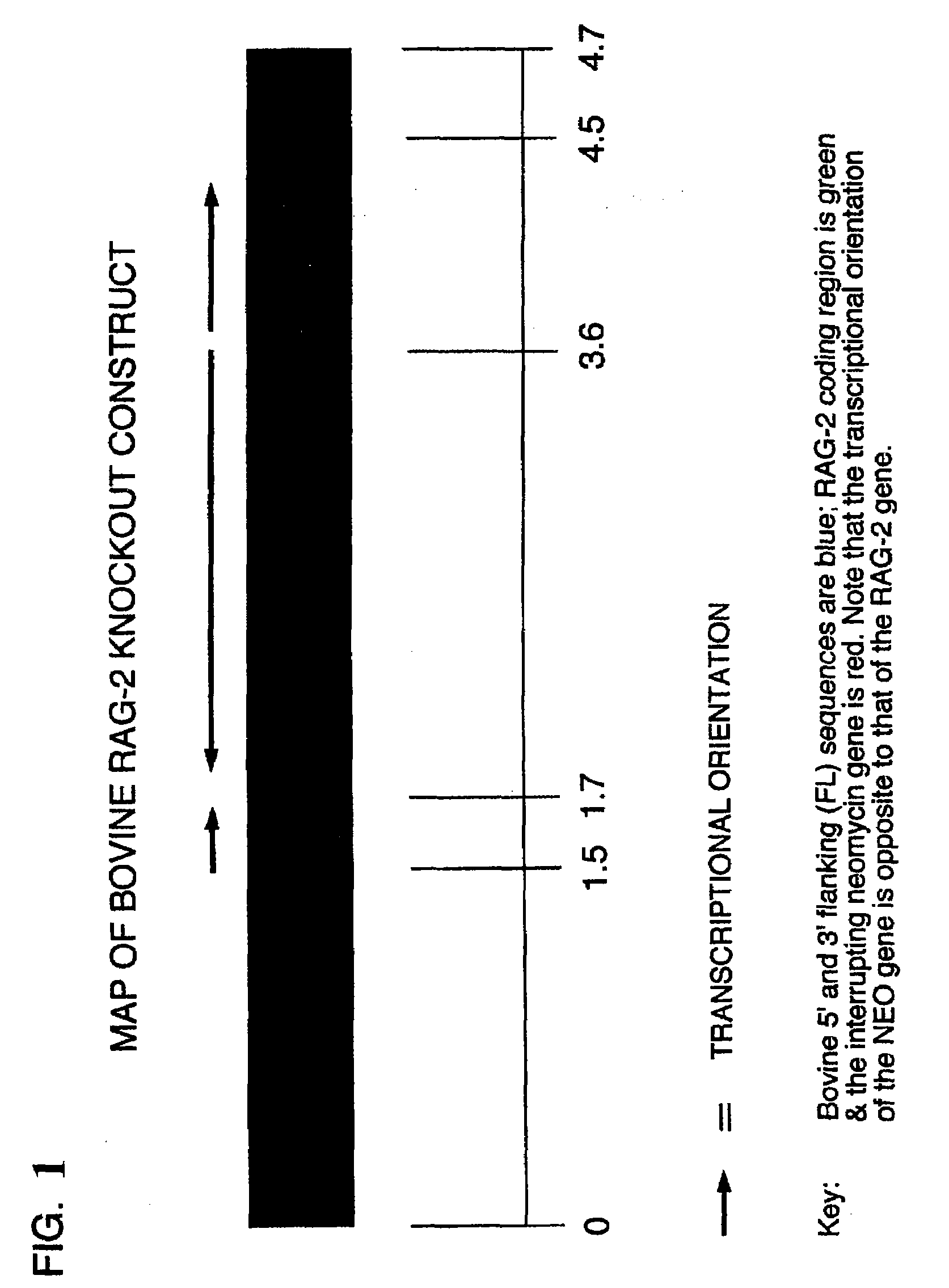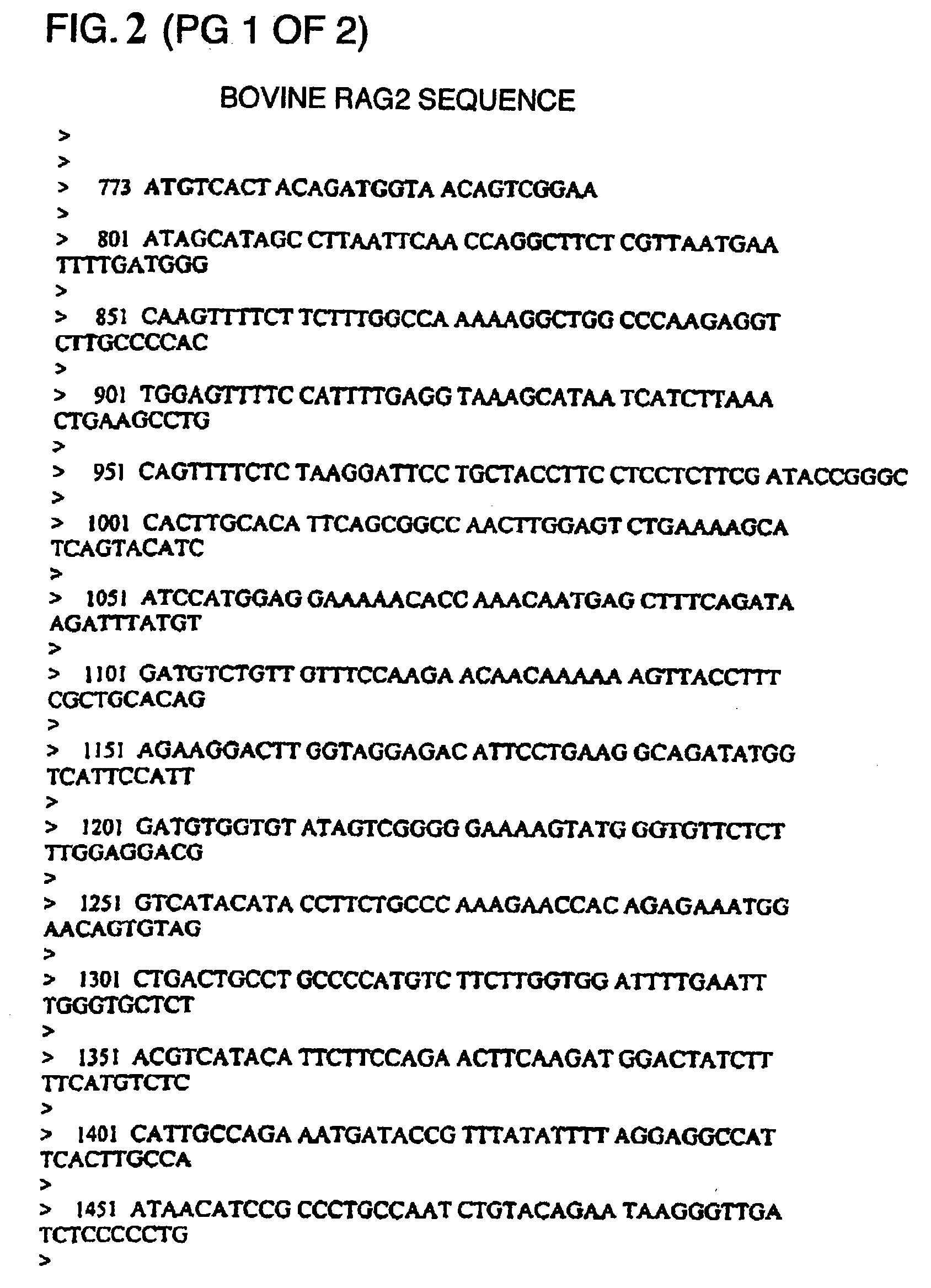Production of ungulates, preferably bovines that produce human immunoglobulins
a technology of immunoglobulin and ungulates, which is applied in the field of ungulate production, can solve the problems of no improvement in the current technology, the supply of human blood is too small to meet the demand for human immunoglobulin, and the toxicity of acutely, so as to achieve the effect of eliminating expression
- Summary
- Abstract
- Description
- Claims
- Application Information
AI Technical Summary
Benefits of technology
Problems solved by technology
Method used
Image
Examples
example 1
Generation of Igm Knockout Bovine Embryos
[0099]The following procedures were used to generate bovine fibroblast cell lines in which one allele of the immunoglobulin heavy chain (mu) locus is disrupted by homologous recombination. A DNA construct for effecting IgM knockout was generated by the removal of introns 1-4 of the Mu locus which were replaced with a copy of neomycin resistance gene. Using this construct, neomycin resistant cell lines have been obtained which were successfully used in nuclear transfer procedures and blastocysts from these cell lines have been implanted into recipient cows. Additionally, some of these blastocysts were tested to confirm that targeted insertion into has occurred appropriately in the mu locus using PCR procedures. Blastocysts resulting from nuclear transfer procedures from several of the cell lines obtained indicated that heterozygous IgM-KO fetuses are in gestation. Additionally, both male and female cell lines that comprise a single IgM (mu) kn...
example 2
Generation of Rag-2 Knockout Bovines
[0139]The bovine rag-2 gene along with 3′ and 5′ flanking sequences was cloned from a bovine lambda ZapII genomic library and used to make the construct, BOVRAG-2-KO, which is shown schematically in FIG. 1. The sequence of bovine rag-2 is shown in FIG. 2. Two versions of this construct have been made. One contains a gene encoding neomycin phosphotransferase (neo) as the selectable marker and the other has puromycin-N-acetyl transferase (puro) as the selectable marker.
[0140]Additional examples of rag-2 knockout vectors that may be used to generate rag-2 knockout bovines are depicted in FIG. 3. These two KO vectors, pR2KObsr and pR3KOhyg, were constructed as follows. To isolate genomic DNA around exon 2 of the bovine rag-2 gene, a DNA probe was amplified by PCR using the following primer pair 5′-GGAGGAAAAACACCAAACAATGA-3′ (SEQ ID NO: 1) and 5′-CTGATAGCCACCAACAATAACAAAT-3′ (SEQ ID NO: 2) (bRag2-F and bRag2-R, respectively). Using this probe, a bovine...
example 3
Transplantation of Human HSC-Enriched Cells into Rag-2 Knockout Bovine Fetuses
[0148]Populations of human cells enriched for human hematopoietic cells enriched for CD34+ cells will be obtained by standard procedures. They will be introduced into the fetus using an ultrasound guided transvaginal injection method. One arm is inserted into the rectum and is used to manipulate the fetus. The peritoneal cavity of the fetus is located using the ultrasound probe inserted into the vagina. The vaginal probe is moved adjacent to the fetus and an injection needle is extended beyond the probe holder and into the fetus for cell injection. Alternatively, the umbilical cord is held in position by rectal palpation and the needle is inserted into the umbilical artery. The methods are similar to those used for collection of amniotic samples or for ovarian follicle aspirations.
PUM
| Property | Measurement | Unit |
|---|---|---|
| time | aaaaa | aaaaa |
| time | aaaaa | aaaaa |
| total volume | aaaaa | aaaaa |
Abstract
Description
Claims
Application Information
 Login to View More
Login to View More - R&D
- Intellectual Property
- Life Sciences
- Materials
- Tech Scout
- Unparalleled Data Quality
- Higher Quality Content
- 60% Fewer Hallucinations
Browse by: Latest US Patents, China's latest patents, Technical Efficacy Thesaurus, Application Domain, Technology Topic, Popular Technical Reports.
© 2025 PatSnap. All rights reserved.Legal|Privacy policy|Modern Slavery Act Transparency Statement|Sitemap|About US| Contact US: help@patsnap.com



